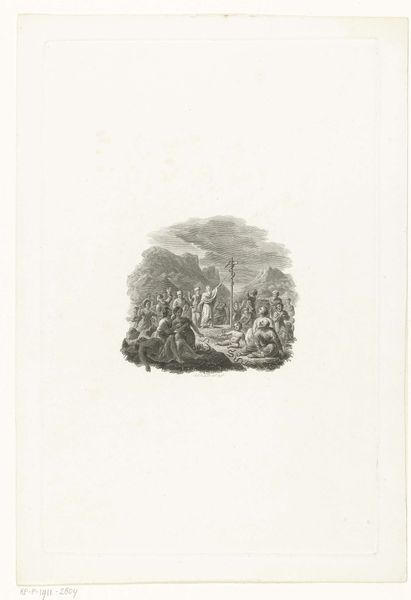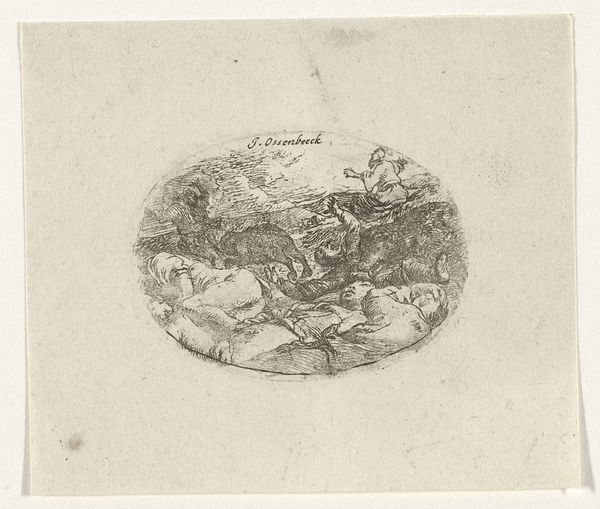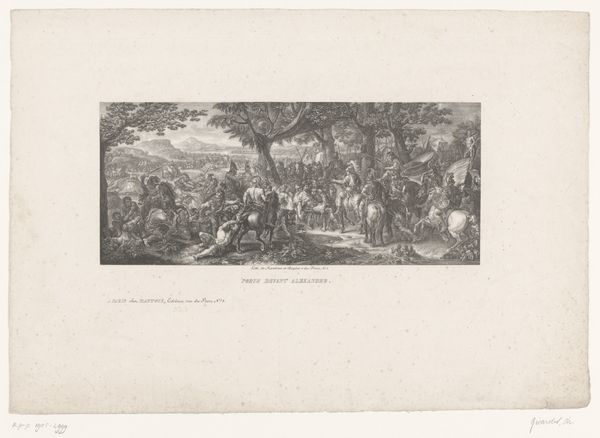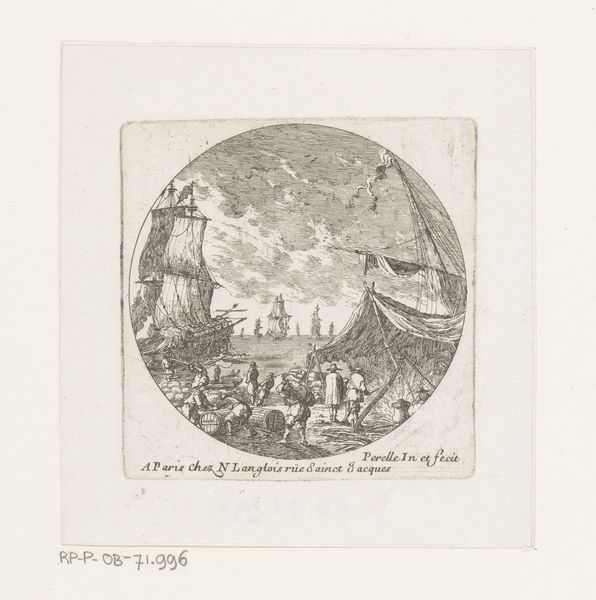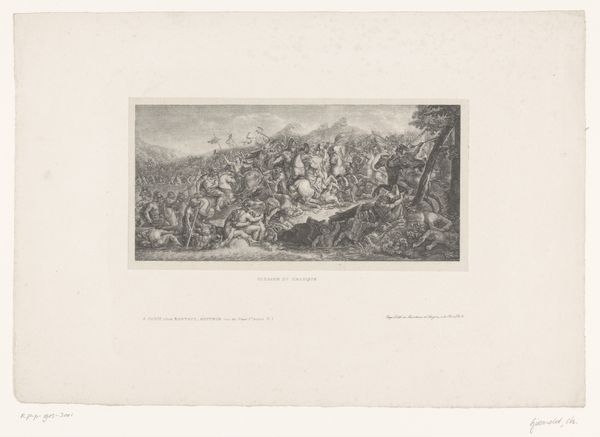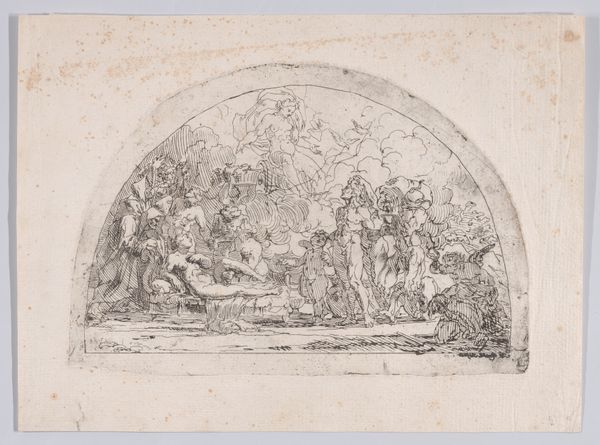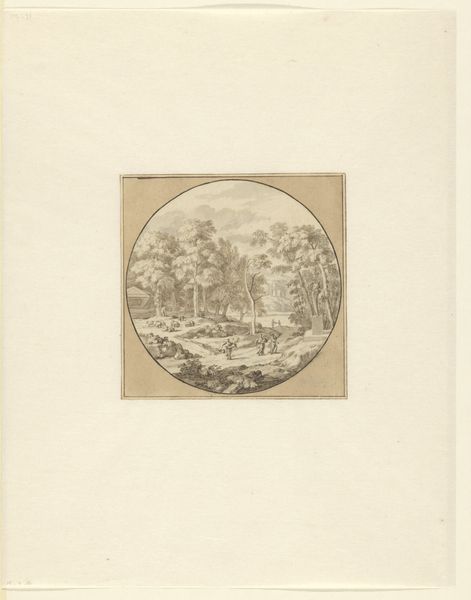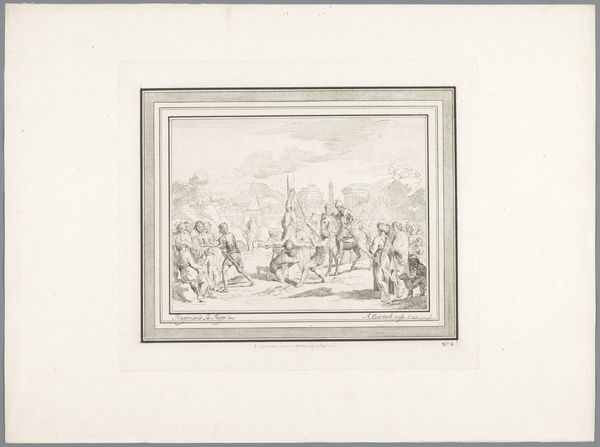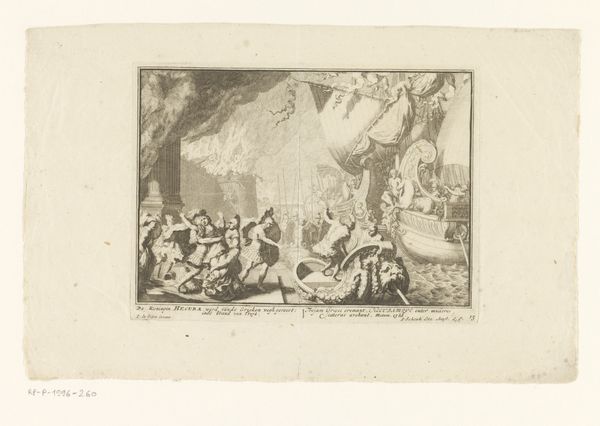
Vignet met een afbeelding van de slag bij Kalisch (29-10-1706), afkomstig uit het portret van Frederik Augustus II, hertog van Saksen en koning van Polen 1706 - 1746
0:00
0:00
print, engraving
#
baroque
# print
#
old engraving style
#
landscape
#
figuration
#
pencil drawing
#
line
#
history-painting
#
engraving
Dimensions: height 65 mm, width 85 mm
Copyright: Rijks Museum: Open Domain
Nicolaas Verkolje created this vignette depicting the battle of Kalisch in 1706, likely using etching or engraving techniques. It’s a print, so made through the repeatable application of pressure. The image is made up of line work, which means the artist would have used sharp tools to physically cut into a metal plate. Ink would then be applied to the recesses to transfer the image onto paper. The final print is small, measuring only 65 by 85 millimeters, but what it lacks in size, it makes up for in detail. The battle scene is filled with charging horses and fallen soldiers, capturing the chaos of war. Think about the labor involved in creating this tiny artwork. The artist needed not only technical skill, but also patience and precision. Each line represents a deliberate choice, contributing to the overall composition. It makes you consider what it meant to represent battle in this period, in a medium that enabled the widespread distribution of imagery. Ultimately, understanding the material and making process helps us appreciate the artistic skill required, and how prints like this one shaped public perception of historical events.
Comments
No comments
Be the first to comment and join the conversation on the ultimate creative platform.
